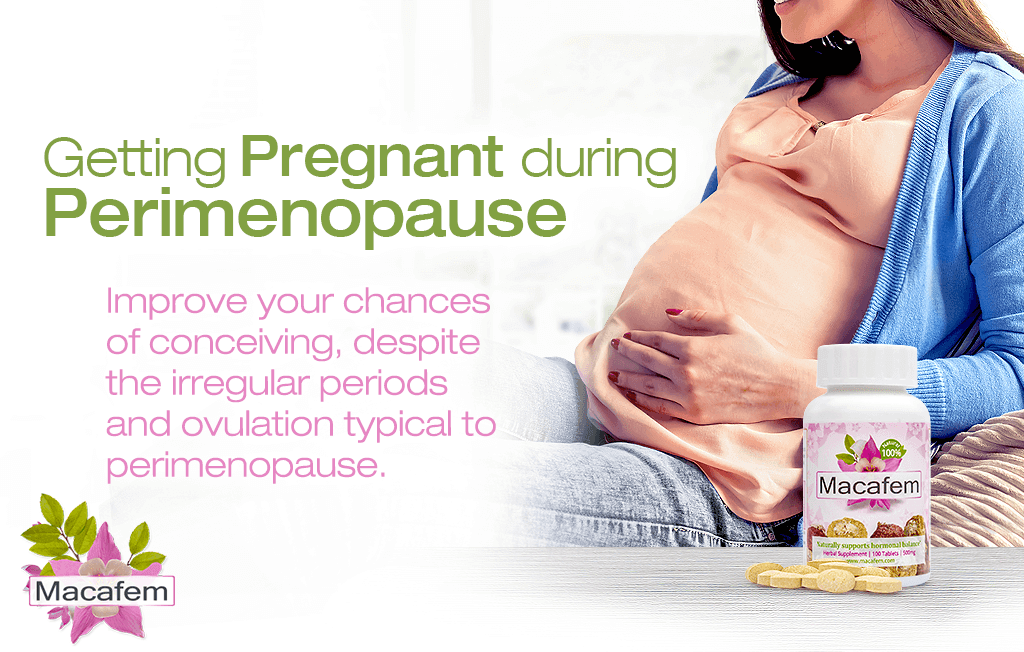Getting Pregnant during Perimenopause: What Are My Chances?
With everything women want to accomplish these days, many consciously delay motherhood until later. However, human biology plays by its own rules, and, sometimes, perimenopause takes women by surprise. While it may be trickier, getting pregnant during perimenopause is not out of their scope. Read on to find out about your pregnancy chances and how to boost them when you’re perimenopausal.

Let’s Start from the Basics: What Does It Mean to be Perimenopausal?
Perimenopause covers the years before a woman’s final period, that is, menopause. It can last for over 10 years, although most women go through it for about four years.
During this time, there are massive fluctuations of reproductive hormones, which happen as the number of eggs in the ovaries (which are necessary for conception) rapidly declines. This causes irregular periods, abnormal ovulation, and overall decline in fertility.
Is it Possible to Get Pregnant during Perimenopause?
Short answer is yes. Women can still get pregnant during perimenopause, even if they have irregular periods and abnormal ovulation. However, it is likely to be more difficult and take longer to conceive.
In fact, women in their 40s – the age at which perimenopause typically takes place – have a 40% chance of conceiving within a year, in comparison to a 96% chance in 20-year-olds. Nevertheless, as long as they still have periods, they are encouraged to keep trying to conceive.
What Challenges Am I Likely to Face?
Besides experiencing difficulties getting pregnant, perimenopausal women may also face challenges in terms of staying pregnant and having healthy children.
It’s not only because their ovarian egg pool is diminishing, but also because the majority of the eggs that are left are of poor quality. This causes high miscarriage rates, from 34 to 53% throughout their 40s. There’s also an increased risk of genetic abnormalities, including Down syndrome.
Action Plan for Successful Conception
The key to optimizing your conception efforts during perimenopause is to act fast. Perimenopause usually lasts for a few years, and making aproactive action plan can help you optimize your chances of conceiving.
- Reach out to your doctor. Before you try to conceive, sit down with your gynecologist, review your health status, and go over the ways in which he or she can help you make the process more effective.
- Estimate your ovulation. It’s crucial to learn how to use your body cues – like cervical mucus or basal body temperature – as well as ovulation kits to pinpoint your ovulation and know exactly when to have sex.
- Take care of your body. Review your daily habits and identify weak spots that could affect your fertility. It could mean improving your eating habits, modifying your workouts, and reaching a healthy weight.
- Nurture your mind. Stress – a well-known fertility inhibitor – is likely to sneak in as you’re trying to conceive. Instead of giving in, find your best ways to get rid of it regularly with yoga, meditation, or hobbies.
- Take Macafem for conceiving. This 100% natural supplement contains hormone-balancing compounds that will stimulate your endocrine system to improve its hormone production, making conception more feasible.
- Research other options. Exploring assisted reproductive technologies (ARTs) doesn’t mean you give up on natural conception. It can simply help you know when it’s time to get help and what options are out there.
No matter how scary the statistics or the thought of being perimenopausal may seem, motherhood may still be in the cards for you. Understanding your odds, making a proactive plan, and boosting your fertility with Macafem are your best allies on your path to becoming a mother.
Fertility and Sterility. (2014). Female age-related fertility decline. Retrieved February 22, 2021 from https://www.fertstert.org/article/S0015-0282(13)03464-X/pdf
Human Reproduction. (1992). Accelerated disappearance of ovarian follicles in mid-life: implications for forecasting menopause. Retrieved February 22, 2021 from https://academic.oup.com/humrep/article-abstract/7/10/1342/664511
Human Reproduction. (2002). Changes with age in the level and duration of fertility in the menstrual cycle. Retrieved February 22, 2021from https://academic.oup.com/humrep/article/17/5/1399/845579
International Federation of Fertility Societies. (2018). Female age and assisted reproductive technology. Retrieved February 22, 2021 from https://journals.lww.com/grh/Fulltext/2018/06000/Female_age_and_assisted_reproductive_technology.3.aspx
Your Fertility. (2018). Age. Retrieved February 22, 2021 from https://www.yourfertility.org.au/everyone/age

